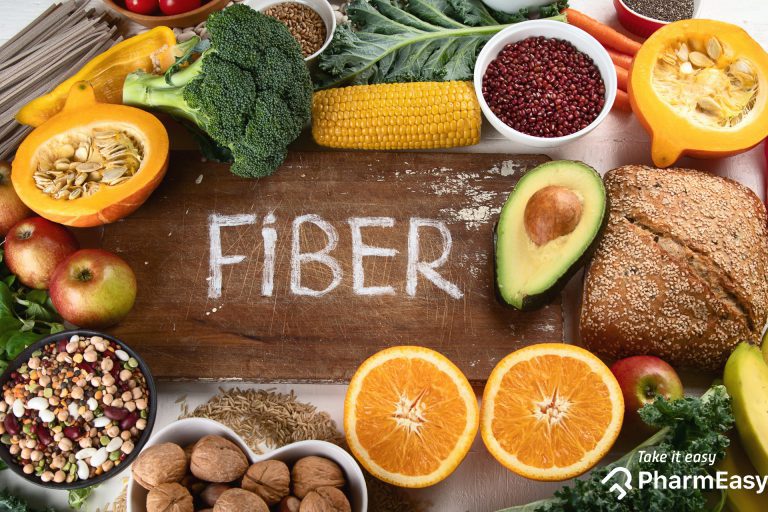Top 10 Ways To Increase Fiber Intake In Your Meal

A well-balanced diet plays a crucial role in maintaining optimal health, and one essential component of a healthy diet is dietary fiber. Fiber, found in plant-based foods, provides a range of health benefits, including improved digestion, weight management, and reduced risk of chronic diseases like heart disease, type 2 diabetes, and certain types of cancer. Despite these advantages, many individuals struggle to consume an adequate amount of fiber in their daily meals.
The average recommended daily fiber intake is around 25 grams for women and 38 grams for men, but studies suggest that most people fall short of these targets. Factors such as the consumption of highly processed foods, low intake of fruits and vegetables, and reliance on refined grains contribute to the fiber gap in modern diets.
In this article, we will explore the top 10 ways to increase your fiber intake and bridge that nutritional gap. By incorporating these strategies into your daily routine, you can ensure you're meeting your body's fiber requirements and reaping the benefits of a fiber-rich diet.
From choosing whole grains over refined options to incorporating legumes, fruits, and vegetables into your meals, there are numerous delicious and nutritious ways to boost your fiber intake. We will delve into specific food choices, such as nuts, seeds, and high-fiber snacks, as well as provide tips for incorporating fiber into your breakfast routine and even baking endeavors. Additionally, we will emphasize the importance of staying hydrated to support the digestion and absorption of fiber.
By following the top 10 ways to increase fiber intake outlined in this article, you'll be on your way to achieving a well-rounded diet that promotes digestive health, weight management, and overall well-being. Let's dive in and explore these simple yet effective strategies for enhancing your fiber consumption.
Top 10 Ways to Increase Fiber Intake
- Choose Whole Grains
- Include Legumes
- Load Up on Fruits
- Embrace Vegetables
- Consume More Nuts and Seeds
- Prioritize High-Fiber Snacks
- Choose Fiber-Rich Cereals
- Incorporate Whole Grains in Baking
- Smoothies with Fiber Boost
- Stay Hydrated
1. Choose Whole Grains
READ ALSO » Top 10 Ways To Reduce Carbohydrate Intake In Your Meals: A Guide To Healthier Eating
Whole grains are a rich source of dietary fiber. Replace refined grains like white bread, pasta, and rice with whole grain alternatives such as whole wheat bread, brown rice, quinoa, and whole grain pasta. These options retain the bran and germ, providing higher fiber content and essential nutrients.
2. Include Legumes
Legumes, including beans, lentils, and chickpeas, are excellent sources of fiber. Incorporate them into your meals by adding them to salads, soups, stews, and stir-fries. They not only boost your fiber intake but also offer a good amount of protein and other vital nutrients.
3. Load Up on Fruits
Fruits are not only delicious but also packed with fiber. Opt for whole fruits rather than fruit juices, as they contain more fiber and fewer added sugars. Apples, pears, berries, and oranges are some high-fiber fruit choices that can be enjoyed as snacks or added to smoothies and cereal.
4. Embrace Vegetables
Vegetables are another fantastic source of fiber. Include a variety of vegetables in your meals, such as broccoli, Brussels sprouts, carrots, and spinach. Roasting, grilling, or steaming vegetables helps retain their fiber content while maintaining their natural flavors.
5. Consume More Nuts and Seeds
Nuts and seeds are not only crunchy and delicious but also excellent sources of fiber. Almonds, chia seeds, flaxseeds, and sunflower seeds are packed with both soluble and insoluble fiber. Snack on a handful of nuts or sprinkle seeds onto yogurt, salads, or oatmeal to increase your fiber intake.
6. Prioritize High-Fiber Snacks
Replace processed and low-fiber snacks with healthier alternatives. Opt for air-popped popcorn, whole fruit, raw vegetables with hummus, or a handful of nuts. These snacks will not only provide a fiber boost but also help you stay satisfied between meals.
7. Choose Fiber-Rich Cereals
Breakfast cereals that are high in fiber can kick-start your day on a healthy note. Look for cereals with at least 5 grams of fiber per serving and minimal added sugars. Pair them with low-fat milk or yogurt and top with fresh fruits for a fiber-packed breakfast.
8. Incorporate Whole Grains in Baking
READ ALSO » Top 10 High-Fiber Foods For Healthy Digestion
When baking at home, substitute refined flour with whole grain alternatives. Use whole wheat flour or oat flour instead of white flour in recipes for bread, muffins, and pancakes. These substitutions enhance the fiber content and add a nutty flavor to your baked goods.
9. Smoothies with Fiber Boost
Smoothies are a convenient and tasty way to increase fiber intake. Add ingredients like spinach, kale, avocado, and ground flaxseeds to your smoothies. These additions not only enhance the nutritional profile but also provide a fiber boost without compromising taste.
10. Stay Hydrated
Lastly, remember to drink an adequate amount of water throughout the day. Fiber absorbs water, and consuming enough fluids helps fiber move smoothly through your digestive system, preventing constipation and promoting regular bowel movements. Aim to drink at least eight glasses of water each day to support the benefits of increased fiber intake.
In conclusion, Increasing your fiber intake is a simple yet effective way to improve your overall health and well-being. By incorporating whole grains, legumes, fruits, vegetables, nuts, and seeds into your diet, you can easily boost your fiber consumption. Additionally, choosing high-fiber snacks, cereals, and baking alternatives further contribute to meeting your daily fiber requirements. Remember to stay hydrated to support the digestion and absorption of fiber. By following these top 10 tips, you can enhance your fiber intake and enjoy the associated health benefits, including improved digestion, weight management, and reduced risk of chronic diseases.
